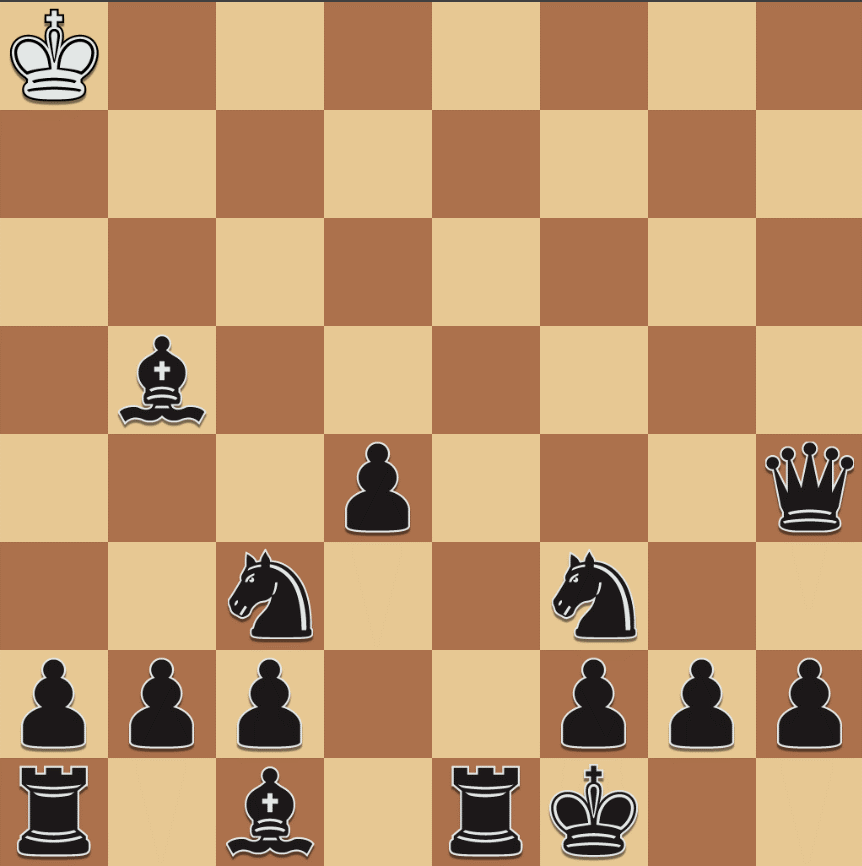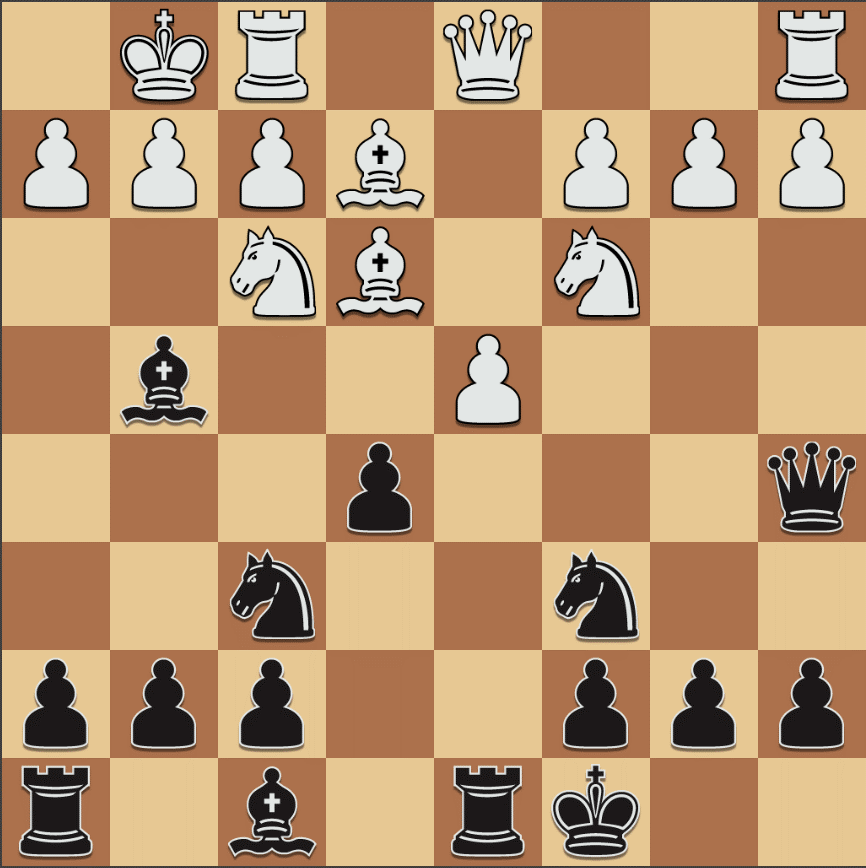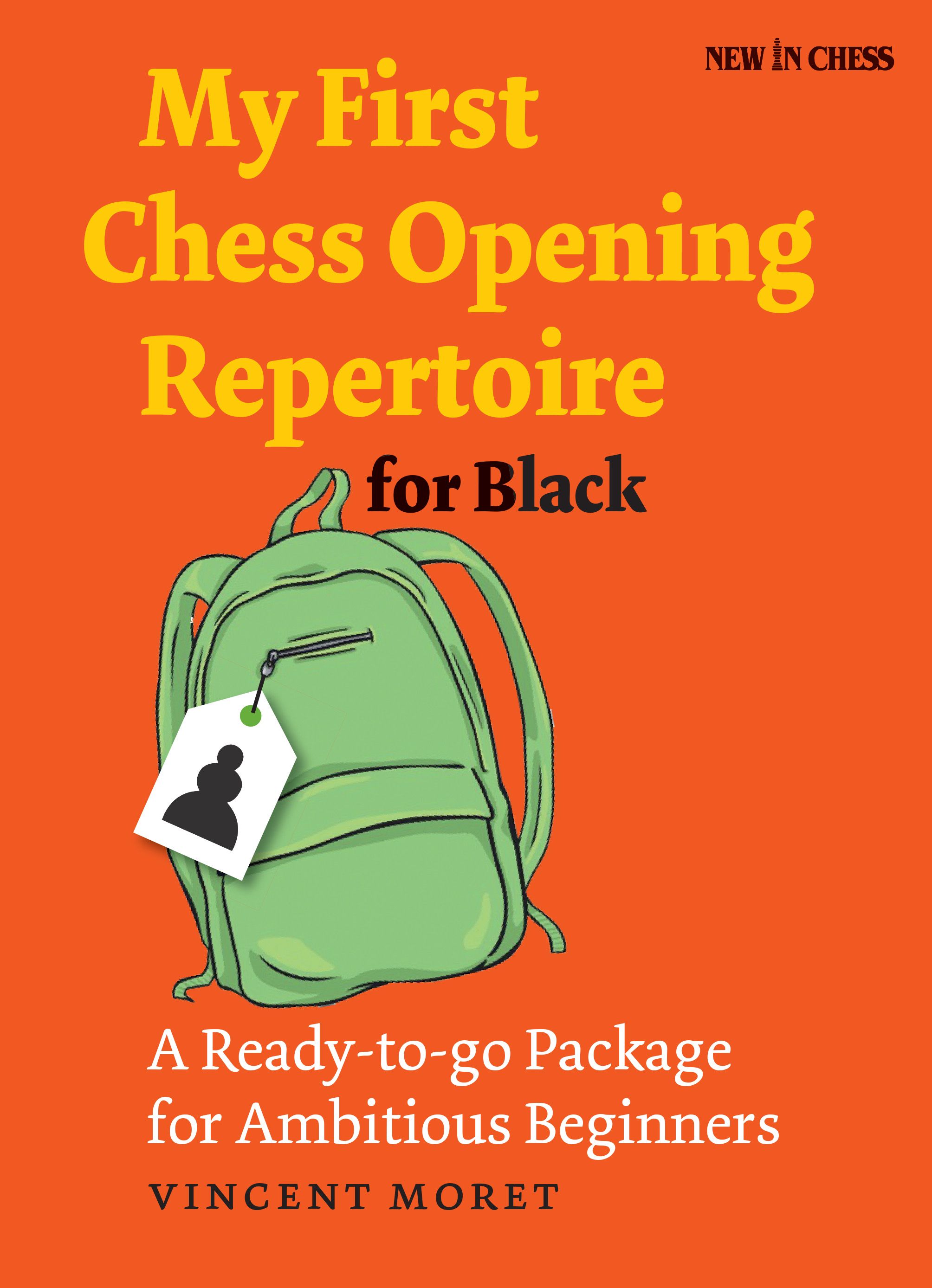“… I feel that the main reasons to buy an opening book are to give a good overview of the opening, and to explain general plans and ideas. …” – GM John Nunn (2006)
Our BOOK OF THE WEEK is My First Chess Opening Repertoire for Black by Vincent Moret.
Every chess player needs to decide which openings he or she is going to play. But where do you start? The risk of drowning in the turbulent sea of chess opening theory is only too real for beginning amateurs. Often your goals and ambitions will be misguided. If you are trying to win in 20 moves, copy what’s in fashion among top-GM’s or memorize variations, you are wasting your time. Most likely you will never get to play your ‘preparation’ and end up aimlessly switching from one opening to the other. After the success of his volume for White, Experienced French chess trainer Vincent Moret now provides a complete, ready-to-go chess opening repertoire for Black. It consists of a sound set of lines that do not outdate rapidly, do not require memorization and are easy to digest for beginners and post-beginners. To show the typical plans and the underlying ideas in the various lines of his repertoire, Moret not only selected games of Grandmasters. He also uses games of young, improving players to highlight the errors they tend to make.
The recommendations are generally gambits and sidelines that allow Black to reach a position in which he can fight for the initiative, an ideal battleground for a club player who spends most of his study time on tactics – as he should.
Here is an excerpt from the book on the author’s recommendation of the Scandinavian.

And here’s what this set-up could give if White plays logical and natural developing moves (but not necessarily the best ones):

After the move …e7-e5 Black’s pressure on the d-file has become unbearable due to the pin on the d4-pawn, and the situation can very quickly turn disastrous for White. Let us look at two example games, both played by the multiple French Girls Campion Mathilde Congiu against strong opponents.
Black won these games with impressive ease, one might say. Unfortunately, if White is not as cooperative as here, Black will rarely get to this dream position through the usual Classical Variation.
Indeed, White can (and should!) very quickly attack and even harass the black queen. Let us not lose sight of the fact that the early development of the queen is the major disadvantage of the classical Scandinavian with 2…Qxd5.
We should not get carried away by these two exciting games by Mathilde Congiu. Let us now see how things can sometimes turn out very badly for Black.
(… the author then proceeds to give two examples where the Black queen is targeted, then show how Black can play for compensation after 2…Nf6 where he either obtains compensation for a pawn after 3.d4 Bg4!? due to his lead in development or transposes into the ideal setup while avoiding the traps. See the book for more details.)
Why choose the Forward Chess edition? It is cheaper than the physical version and the variations are more efficient to play through on a digital board.
Learn More: My First Chess Opening Repertoire for Black

- Review: Perpetual Chess Improvement - May 9, 2024
- Dark Mode is now live on Web Reader - April 30, 2024
- Book Review: Tal Botvinnik 1960 - April 24, 2024
